The draft Political Report of the 13th Party Central Committee at the 14th Party Congress has set out the orientation to establish a new growth model, restructure the economy, promote industrialization and modernization, taking science, technology, innovation and digital transformation as the main driving force.
Specifically, the draft states: Establishing a new growth model with the goal of improving productivity, quality, efficiency, added value and competitiveness of the economy ; taking science, technology, innovation and digital transformation as the main driving force; creating new high-quality production capacity and production methods, focusing on data economy and digital economy; promoting digital transformation, green transformation, energy transformation, structural transformation and quality of human resources. Identifying new growth drivers and taking science and technology as the focus to renew traditional growth drivers...
6 national strategic products
That is the sharing of Dr. Luong Viet Quoc, CEO of Real-time Robotics Company (RtR). On October 7, 2025, Mr. Luong Viet Quoc received an invitation to join the "Advisory team to build a program of strategic technology products prioritized for deployment in 2025" of the Ministry of Science and Technology . Then, on October 9, Permanent Deputy Minister of Science and Technology Vu Hai Quan signed the decision to establish the above-mentioned Expert Team.
On October 10, the Expert Group had its first meeting. Not long after, the Draft Decision "Approving the national science, technology and innovation program to develop strategic technology products prioritized for implementation in 2025" with the opinions of experts, was posted on the National Science and Technology Initiative Portal.
Accordingly, 6 strategic products selected by Vietnam to be deployed in 2025 include: (1) Large language model and Vietnamese virtual assistant, (2) AI camera processing at the edge, (3) Autonomous mobile robot, (4) 5G mobile network system and equipment, (5) Blockchain network infrastructure and application layers for traceability and crypto assets, (6) Unmanned aerial vehicle (UAV).
Particularly for the UAV field, the draft decision sets the target that by 2027, Vietnam will have at least 20 UAV patents; have at least 10 product lines formed from mastered technology, exported to the G7 market; and become the leading country in Southeast Asia in the invention, creation and production of UAVs.
By 2030, Vietnam will have at least 3 UAV enterprises with international scale and competitiveness, including at least 1 technology enterprise with a valuation of over 1 billion USD, capable of exporting UAV products, services and technology to the G7 market.
"The working speed is very fast. This reflects the determination of the Steering Committee to implement Resolution 57. The goals are being specifically quantified," Mr. Quoc told VietNamNet reporter.
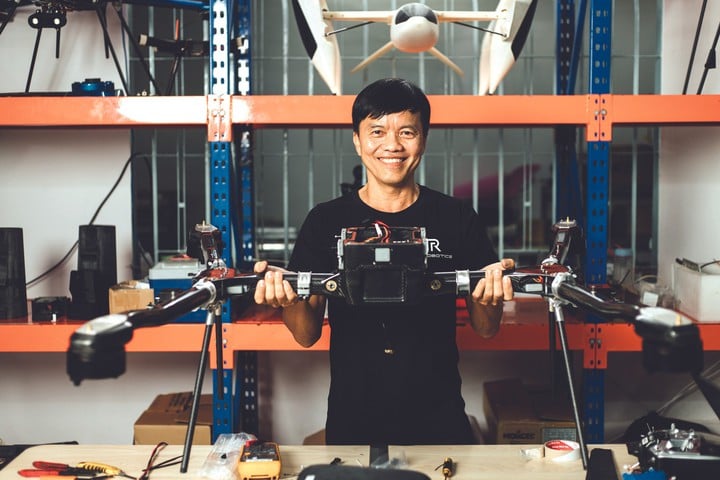
Dr. Luong Viet Quoc.
Businesses need a sandbox mechanism
However, what worries CEO RtR the most is the policy implementation process.
For the UAV sector, at present, obtaining a license for test flights is still difficult. Besides, it is not easy for businesses to import components.
For example, UAV businesses need to import components called "data links". This is a device that serves to transmit data and signals between the aircraft and the ground. However, Vietnam only allows the import of "data links" with two frequencies: 2.4 GHz and 5.8 GHz. Meanwhile, this device has been produced and used in many different frequencies in the world.
"Enterprises importing equipment for research purposes or fulfilling orders for foreign partners must not deviate from the two frequencies specified above," Mr. Quoc cited and said that in the draft document being commented by the Expert Group for the Ministry of Science and Technology, a sandbox mechanism - controlled testing - will be included to develop strategic technology products.
"In order for Vietnam's strategic industries to catch up and hopefully surpass the world, the management mechanism must be as favorable as or better than other countries. Otherwise, the strategic industry will still lag behind," he emphasized.
Regarding flight licensing, he cited China's UAV management policies that achieve two goals. The first goal is to ensure national defense and security. The second goal is to build a policy that allows the UAV industry to thrive, and China to become a leading country in civil UAVs.
Thus, according to Mr. Quoc, Vietnam can completely refer to and adjust the above policy. What we need is to adjust so that the institution becomes a competitive advantage, that is, to build advanced regulations, surpassing many other countries.
"If ministries and branches continue to defend their own views in each field, the general system will always lag behind other countries. Thus, there is no way to help science, technology, and innovation keep up with the world. Resolutions or legal documents are made up of words. But changing the mindset to change the words is important," said the RtR CEO.
Requires the capacity of an ecosystem
From a research perspective, Dr. Dang Pham Thien Duy, Deputy Head of Research and Innovation, School of Business, RMIT University Vietnam, believes that the power of innovation does not only come from capital or technology, but from the capacity of an entire ecosystem. International experience has proven this.
Singapore is a prime example of how the State creates the environment, businesses lead the market and institutes/schools provide knowledge. Two typical initiatives of this island nation are: Block71 and LaunchPad @ One-north, implemented by NUS Enterprise (National University of Singapore’s start-up support program) in collaboration with Singtel Innov8 (Venture Capital Fund) and JTC (Enterprise Development Agency).
Accordingly, the Singapore Government uses a technology ordering mechanism to create customers for domestic start-ups, helping new ideas to be quickly verified and commercialized.
South Korea is another example of how a country can build resilience through a comprehensive strategy. In July 2020, the Digital New Deal, part of the Korean New Deal, was announced, with a total investment of 160 trillion won (US$112 billion), of which more than 58 trillion won (US$40.6 billion) will be spent on data, digital infrastructure and artificial intelligence.
The South Korean government aims to create nearly 2 million new jobs by 2025 and allocate at least half of this investment to regions outside Seoul. This will integrate universities, businesses and local governments into the same innovation chain, helping South Korea maintain global technological competitiveness and spread innovation down to the regional level, said the RMIT University member.
Source: https://mst.gov.vn/viet-nam-can-xay-dung-cac-quy-dinh-tien-tien-vuot-len-so-voi-nhieu-quoc-gia-khac-197251117202855013.htm










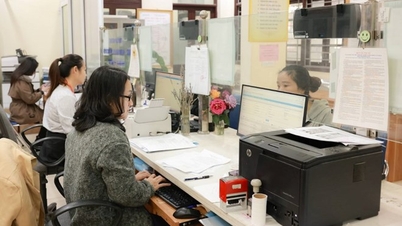













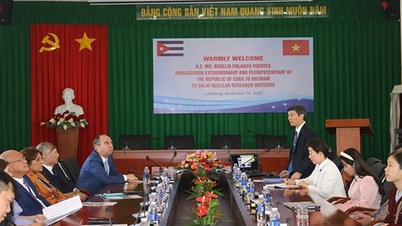
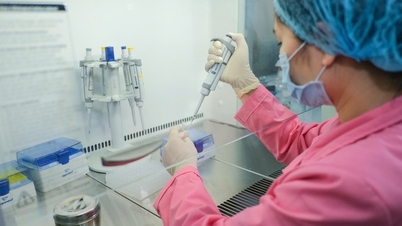


![[Photo] General Secretary To Lam and National Assembly Chairman Tran Thanh Man attend the 80th Anniversary of the Traditional Day of the Vietnamese Inspection Sector](https://vphoto.vietnam.vn/thumb/1200x675/vietnam/resource/IMAGE/2025/11/17/1763356362984_a2-bnd-7940-3561-jpg.webp)







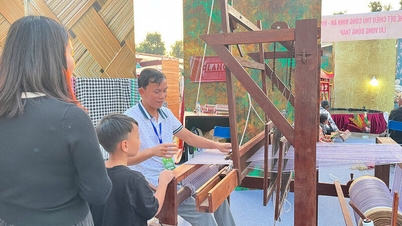

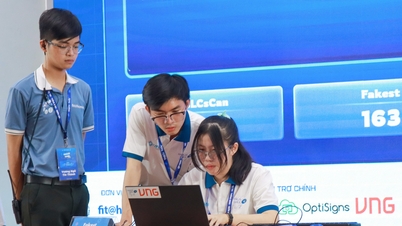


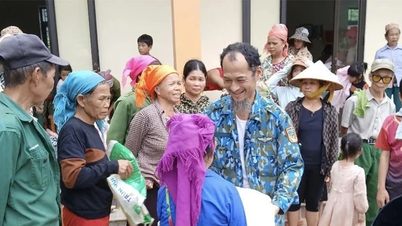



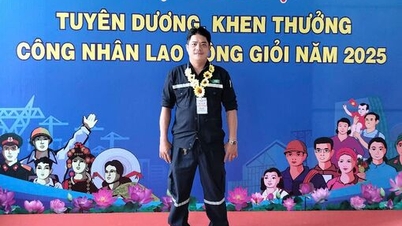






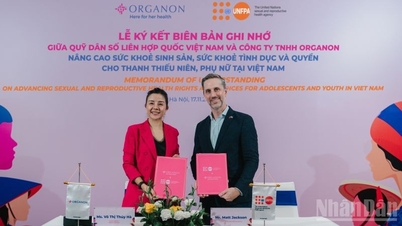

















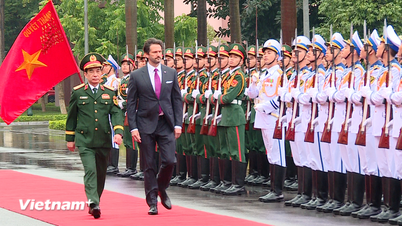








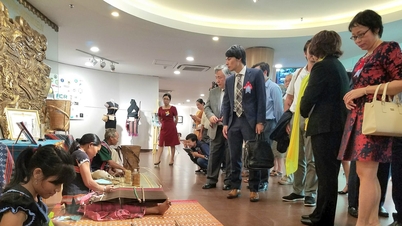




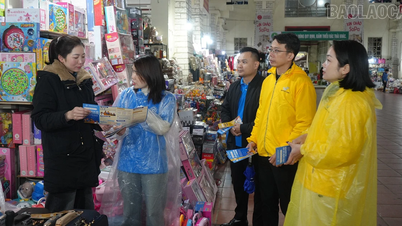
















Comment (0)